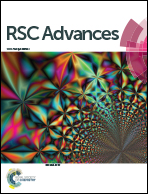Performance and potential problems of high power density zinc–nickel single flow batteries
Abstract
High power density with high efficiency can facilitate rapid charge–discharge and reduce the cost of zinc–nickel single flow batteries, and therefore it is of significant technological importance. In this paper, the battery performance and potential problems have been investigated at high current density up to 300 mA cm−2, which is the highest current density that has ever been obtained. The results show that coulombic efficiency first increases and then decreases with the current density increasing due to the non-uniform distribution of electrode potential and side reactions. The positive electrode deeply discharges and zinc accumulates on the negative electrode at the end of the discharging process at a high current density. The morphologies of the deposited zinc vary from smooth, spongy to dendrite with the increasing current density. Moreover, the positive polarization is a critical obstacle to improve the performance of zinc–nickel single flow batteries at a high current density. Based on these findings, we point out the remaining issues and struggling directions enabling high power density ZNBs without the substantial loss of cycle life.


 Please wait while we load your content...
Please wait while we load your content...